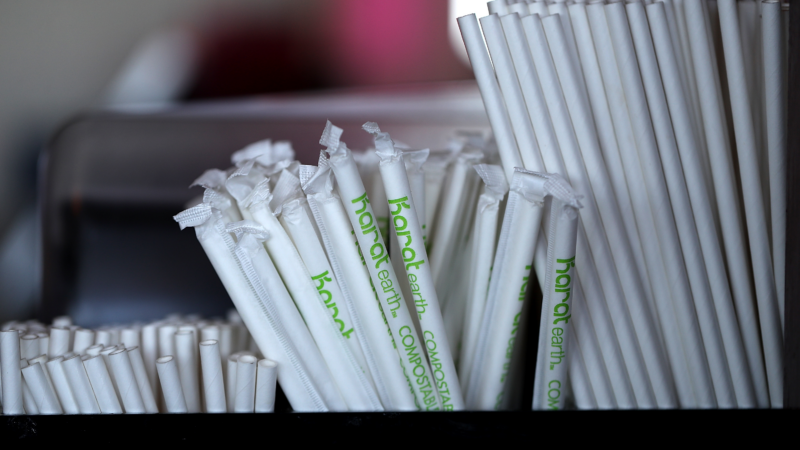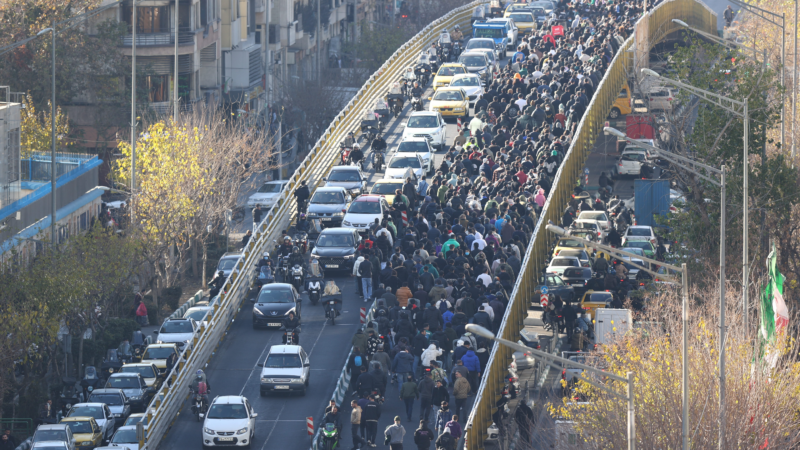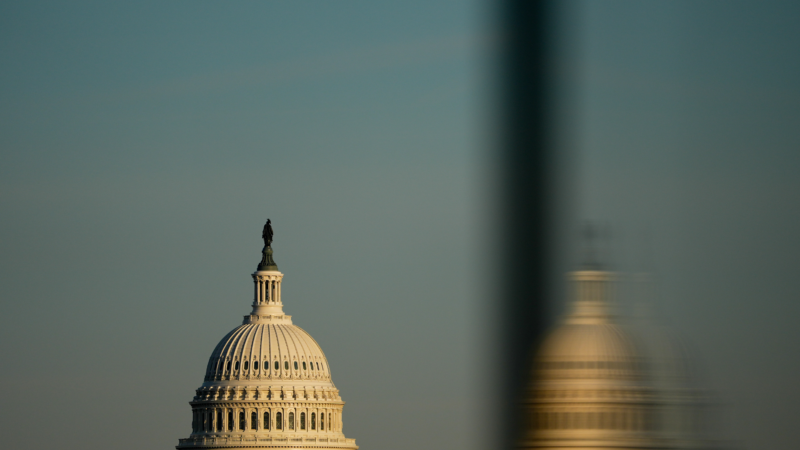Trump says ‘we’re going back to plastic straws.’ Is the paper straw dead?
A decade ago, a video of a sea turtle with a plastic straw stuck in its nostril went viral, spurring a wave of activism aimed at curtailing plastic pollution. The disposable plastic straw became the movement’s poster child. Bans or restrictions on plastic straws were passed in dozens of cities and states.
Backlash followed, and now things seem to have come full circle. President Trump signed an executive order Monday, decrying the “irrational campaign against plastic straws,” and stating that it is “the policy of the United States to end the use of paper straws.”
Where does this leave the movement to cut plastic pollution? Is the paper straw really dead?
“It was never about the straw in particular,” says Jackie Nuñez, founder of the Last Plastic Straw campaign. “It was about single-use plastics, a way to get people to act on it in a simple, tangible way.”
Straws, she says, were a “gateway” issue to get people interested in curbing plastic use. According to one estimate, Americans use, and throw away, as many as a half a billion straws each day.
Nuñez was one of the first people to start advocating for ditching plastic straws, back in 2009. In the early days, pre-turtle video, there were a lot of doubters, even in the world of environmental nonprofits.
“What I found was, even the bad press was good press,” Nuñez says. When people were bashing her anti-plastic-straw crusade, she saw it as an opportunity to talk about the growing problem of single-use plastics.
During a televised signing ceremony Trump railed against paper straws — adopted in recent years as a biodegradable alternative to plastic ones.
“These things don’t work. I’ve had them many times, and on occasion, they break, they explode,” Trump said. “If something’s hot, they don’t last very long, like a matter of minutes, sometimes a matter of seconds. It’s a ridiculous situation.”
Nuñes admits the movement against plastic straws may be over, in terms of being an issue to galvanize the public. But she says efforts to move away from plastic straws did have a lasting impact.
“You can’t undo what you’ve learned, you can’t unsee what you’ve seen. That’s the one thing that I think the plastic straw did. It just really kind of opened up that awareness about single-use plastics,” Nuñez says.
More recently, the movement to reduce single-use plastic has focused less on wildlife (sorry sea-turtles), and more on the negative impact plastics can have on human health, citing a growing body of scientific research.
A study published this month found that human brain samples contained a whole spoon’s worth of tiny nanoparticles. Earlier research found plastic particles in human lungs and in mens’ testicles. One study from last year found nearly a quarter-million plastic particles in a typical liter of bottled water.
Trump’s executive order directs federal agencies to stop purchasing paper straws, making sure they are not provided in government buildings. It also calls for a “National Strategy to End the Use of Paper Straws” to be produced within 45 days.
Though the executive order aims to “alleviate the forced use of paper straws nationwide,” according to a White House fact sheet, plastic straw bans and restrictions will remain in effect in cities and states across the country.
More than a half dozen states have laws stating that restaurants and bars can only provide plastic straws if customers request them. This includes New York, California, Oregon, Washington, New Jersey, Delaware and Rhode Island. Dozens of cities and counties also have restrictions in place — some, including Washington, D.C., ban businesses from providing plastic straws, even if the customer asks for one.
Trump’s action rolls back steps taken by the Biden administration to cut plastic pollution. Last year, Biden pledged to start phasing out the federal government’s purchasing of plastic straws and other single-use plastics starting in 2027.
Taiwan’s president pledges to defend island’s sovereignty after Chinese military drills
Taiwanese President Lai Ching-te vowed to defend the self-ruled island's sovereignty in the face of what he termed China's "expansionist ambitions," days after Beijing wrapped up live-fire military drills near its shores.
Deaths reported during widening protests in Iran sparked by ailing economy
The protests began due to economic pressures, with Iran's currency rapidly depreciating. Demonstrators have also chanted against the country's theocracy.
Congress failed to extend Obamacare subsidies. This Democrat says Trump can save them
Sen. Peter Welch, D-Vt., says he thinks the Senate can pass a "retroactive" Affordable Care Act subsidy extension, but "we need President Trump."
Rideshare union rights, social media limits and other state laws taking effect Jan. 1
Every new year, public media reporters across the country bring us some of the new state laws taking effect where they are. Here are six in 2026.
Guides to help you tackle your New Year’s resolutions
From building your strength to tackling credit card debt, NPR's Life Kit has a newsletter journey to help you tackle your New Year's resolution.
Guides to help you tackle your New Year’s resolutions
From building your strength to tackling credit card debt, NPR's Life Kit has a newsletter journey to help you tackle your New Year's resolution.






